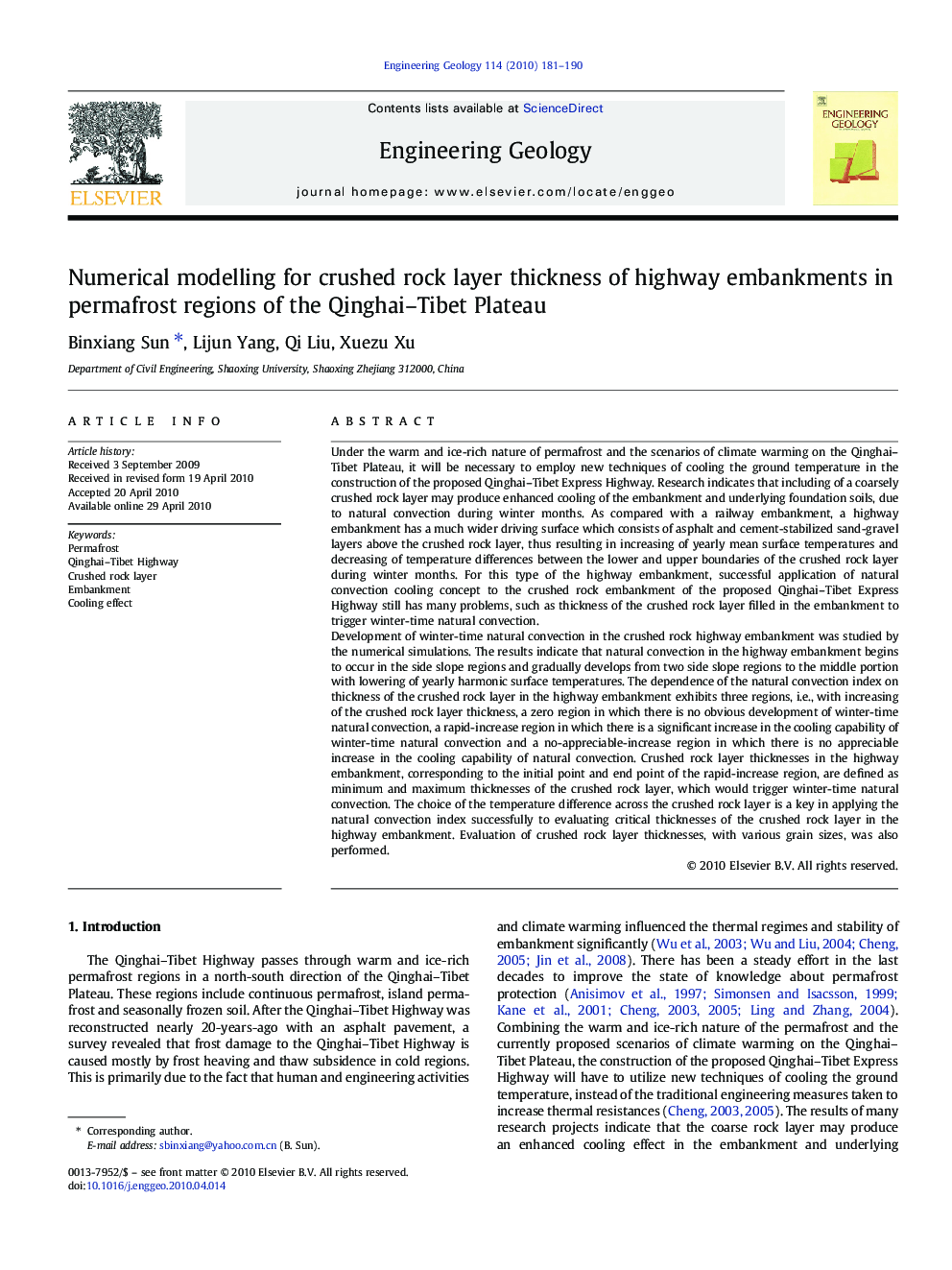| کد مقاله | کد نشریه | سال انتشار | مقاله انگلیسی | نسخه تمام متن |
|---|---|---|---|---|
| 4744302 | 1641865 | 2010 | 10 صفحه PDF | دانلود رایگان |

Under the warm and ice-rich nature of permafrost and the scenarios of climate warming on the Qinghai–Tibet Plateau, it will be necessary to employ new techniques of cooling the ground temperature in the construction of the proposed Qinghai–Tibet Express Highway. Research indicates that including of a coarsely crushed rock layer may produce enhanced cooling of the embankment and underlying foundation soils, due to natural convection during winter months. As compared with a railway embankment, a highway embankment has a much wider driving surface which consists of asphalt and cement-stabilized sand-gravel layers above the crushed rock layer, thus resulting in increasing of yearly mean surface temperatures and decreasing of temperature differences between the lower and upper boundaries of the crushed rock layer during winter months. For this type of the highway embankment, successful application of natural convection cooling concept to the crushed rock embankment of the proposed Qinghai–Tibet Express Highway still has many problems, such as thickness of the crushed rock layer filled in the embankment to trigger winter-time natural convection.Development of winter-time natural convection in the crushed rock highway embankment was studied by the numerical simulations. The results indicate that natural convection in the highway embankment begins to occur in the side slope regions and gradually develops from two side slope regions to the middle portion with lowering of yearly harmonic surface temperatures. The dependence of the natural convection index on thickness of the crushed rock layer in the highway embankment exhibits three regions, i.e., with increasing of the crushed rock layer thickness, a zero region in which there is no obvious development of winter-time natural convection, a rapid-increase region in which there is a significant increase in the cooling capability of winter-time natural convection and a no-appreciable-increase region in which there is no appreciable increase in the cooling capability of natural convection. Crushed rock layer thicknesses in the highway embankment, corresponding to the initial point and end point of the rapid-increase region, are defined as minimum and maximum thicknesses of the crushed rock layer, which would trigger winter-time natural convection. The choice of the temperature difference across the crushed rock layer is a key in applying the natural convection index successfully to evaluating critical thicknesses of the crushed rock layer in the highway embankment. Evaluation of crushed rock layer thicknesses, with various grain sizes, was also performed.
Journal: Engineering Geology - Volume 114, Issues 3–4, 10 August 2010, Pages 181–190